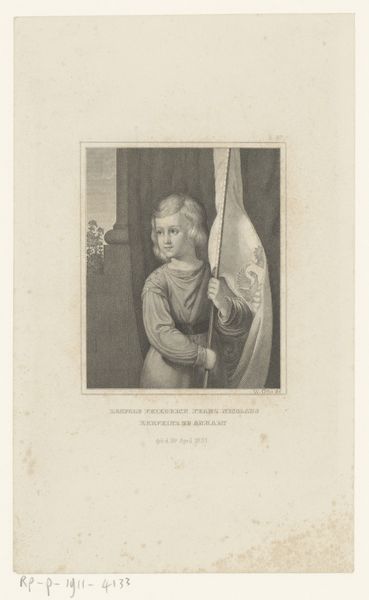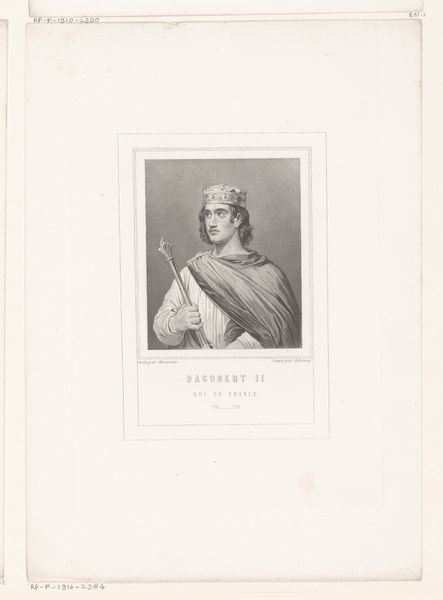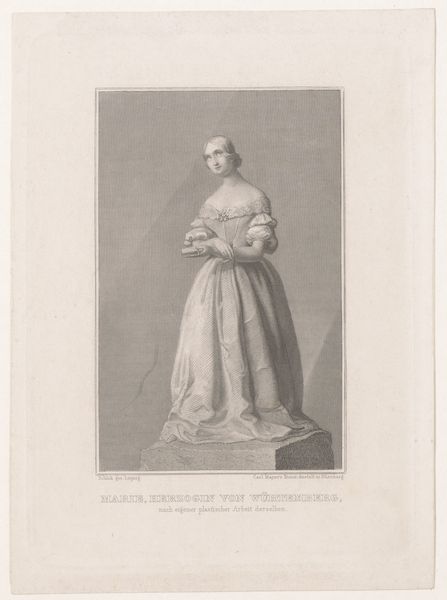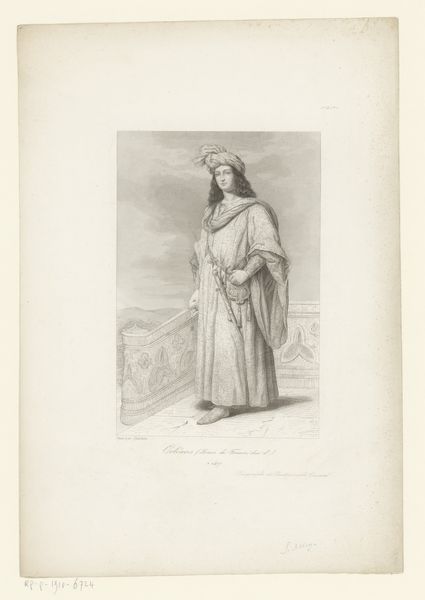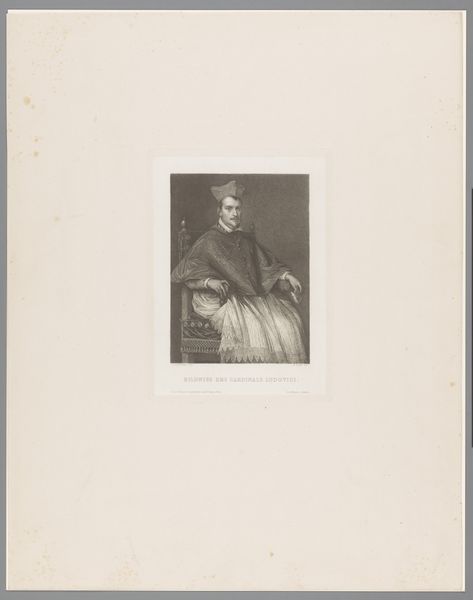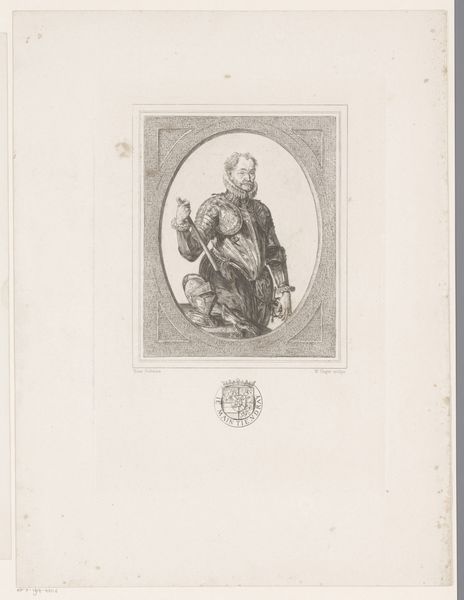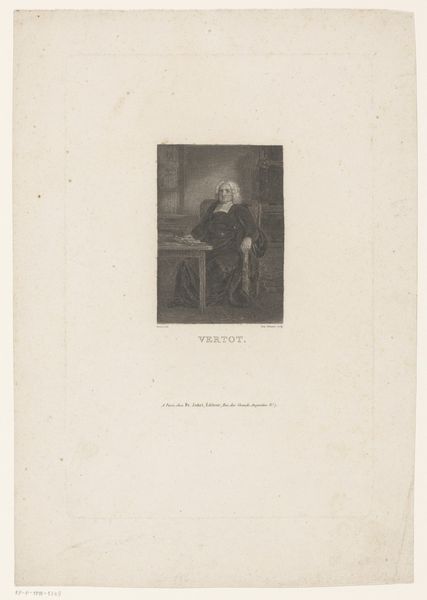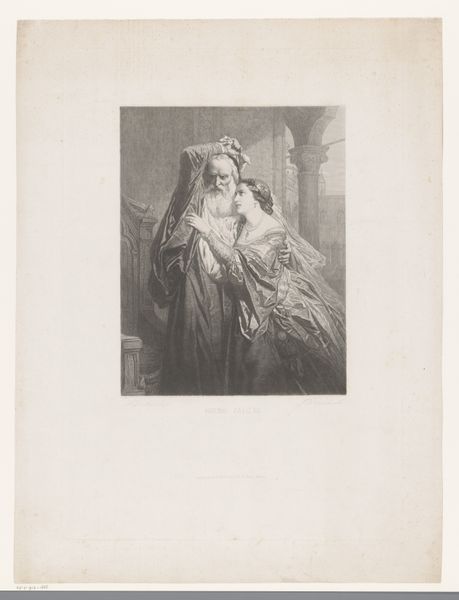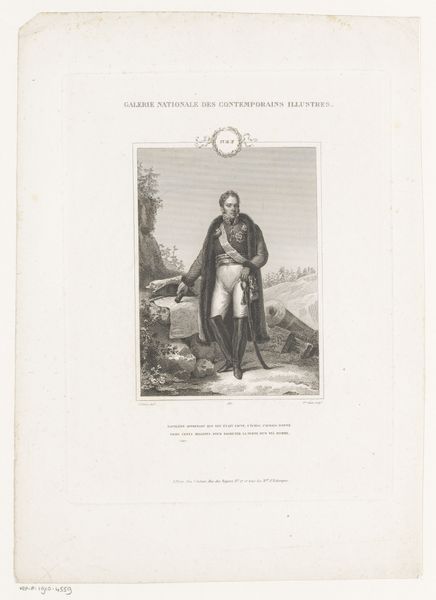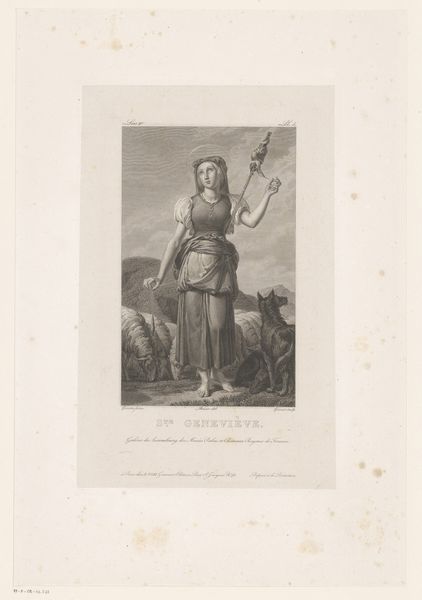
engraving
#
portrait
#
neoclacissism
#
history-painting
#
academic-art
#
engraving
Dimensions: height 144 mm, width 108 mm
Copyright: Rijks Museum: Open Domain
Editor: So, this is a portrait of Franz II Josef Karel, made around 1832-1887 by Ferdinand Delannoy. It’s an engraving. The detail is incredible, but it feels very staged, very official. What do you see in this piece that I might be missing? Curator: The official nature is precisely what’s intended. Consider the symbols: the crown on the table, the landscape visible through the window… Aren’t they staged to subtly declare, more like reinstate, the sitter's claim, his cultural lineage? Editor: That makes sense. I hadn’t thought about the landscape outside as being a symbol too. Curator: Exactly. It evokes a sense of vast dominion and control, doesn't it? Note how he holds the paper—a symbol of law, of decrees, further solidifying his power. The paper almost acts like a shield, declaring his dominance. Editor: It’s interesting how these symbols layer meaning onto the portrait. I initially just saw it as a record, a face. Curator: And consider how Neoclassicism emphasizes order and reason, mirroring a desire for social stability. Delannoy isn’t just capturing a likeness; he’s crafting an image of power, loaded with symbolism for an intended audience. Do you think viewers at the time would understand and decode these visual cues? Editor: Definitely. It’s like the painting is speaking in a language of symbols they’d all understand. Thanks, seeing the layers of symbolism really changes how I look at this. Curator: My pleasure. Every image whispers tales from the past. Now you have ears to listen.
Comments
No comments
Be the first to comment and join the conversation on the ultimate creative platform.
